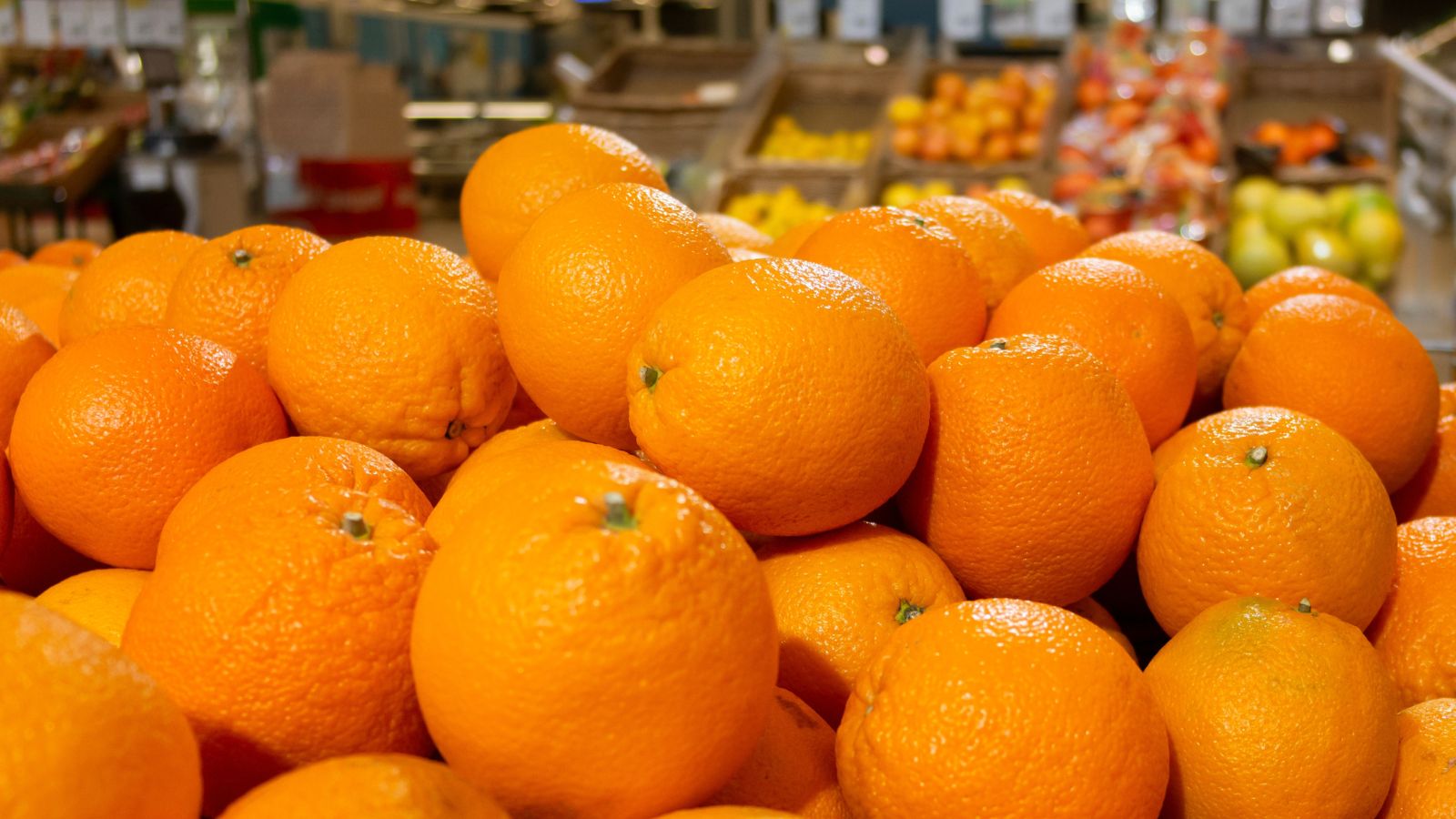With grocery costs rising, wasting food is something many of us cannot afford to do anymore. Also, some foods hardly stand the test of time like others do and, ideally, need to be consumed within days of purchase. So that you don’t find yourself throwing food away, here are a few consumables notorious for their short shelf lives and tips on how to store them for maximum freshness.
Bananas

According to Bartleby, bananas only last 2 to 9 days after being harvested because the ethylene gas they produce turns them overly ripe, brown, and mushy. Although you can always make banana bread, these overly soft and sweet bananas aren’t great for eating. To extend their life, store bananas away from other fruits and wrap their stems in plastic to reduce gas exposure.
Fish

While nutritious, fresh fish is highly perishable, sometimes keeping for only a few days before being past its best. A study published on ResearchGate found that coldwater marine species like sardines and hake rot the fastest, whereas tropical, freshwater perch and catfish last longer. Proper storage is key: use the coldest part of your refrigerator and freeze fish if not used within a few days.
Peaches

A favorite summer fruit, peaches are sweet and delicious but don’t last long once ripe—attracting mold and developing soft spots within only a few days due to their soft, delicate skins. Science Direct reports that they rot within days in warm environments, so place peaches in the fridge. If you have many of them, consider preserving them as jam or freezing them in cubes.
Berries (Strawberries, Blueberries, Raspberries)

Berries are a delicious and nutritious fruit, but they must be eaten frustratingly quickly. IntechOpen states they don’t mature once picked, so they must be harvested when ripe and eaten quickly, or else they mold or ferment. Small, soft berries like blueberries are the most delicate—remove their plastic packaging and store them in a paper-lined container to absorb moisture.
Leafy Greens (Spinach, Lettuce, Kale)

Feast Local writes, “Leafy greens with tougher, thicker leaves, such as kale and collard greens, tend to have a longer shelf life than those with more delicate, tender leaves, such as lettuce and spinach.” Their high water content makes them wilt and decay, so keep them in a dry, well-aerated ‘crisper drawer’ in the refrigerator.
Avocados

Avocados may last a while after harvesting, but they have a notoriously narrow window during which they are perfectly ripe, after which they become brown and slimy. Southern Living recommends keeping unripe avocados at room temperature but placing mature specimens in water in the refrigerator—which adds a few days of ‘perfect ripeness’ opportunity!
Tomatoes

One of the most useful and ubiquitous fruits, tomatoes last about a week when stored properly in the refrigerator, but their shelf life is considerably shorter if left in warmer conditions, according to a study. Unfortunately, chilling results in poorer flavor and texture, so take out the number of tomatoes you want to eat each day and keep them at room temperature for best results.
Mushrooms

These delicious fungi can quickly become slimy and brown if not eaten promptly because their porous structure easily absorbs atmospheric moisture. Everyday Health recommends picking larger mushrooms and keeping them unsliced and unwashed in a paper bag or paper-lined container to absorb moisture.
Shellfish

Like fish, marine crustaceans and mollusks (collectively called shellfish) have a very short shelf life and can be dangerous if not consumed before they spoil. Store foods like oysters, mussels, crab, and lobster in the refrigerator in a container covered with a damp cloth—this helps maintain humidity but prevents excessive moisture.
Soft Cheeses

While delicious, soft cheeses like ricotta, brie, Camembert, and goat’s cheese have a higher moisture content than hard cheeses, meaning bacterial growth and spoilage happen more quickly. Eat By Date states that, once opened, such cheeses only last 1–2 weeks in the refrigerator. For maximum freshness, wrap them in plastic in an airtight container.
Cooked Rice

Surprisingly, cooked rice has a much shorter lifespan than dried rice and can harbor bacteria that cause food poisoning if stored incorrectly or for long periods. After boiling, cool the rice quickly and store it in the refrigerator for a maximum of 3–4 days. If the grains are covered in sauce, they’ll last longer. Always reheat rice thoroughly to kill any bacteria before consuming.
Milk

A staple food in most households, milk only lasts for around a week once opened, even if properly stored, says Taste of Home. Keep milk in a cold refrigerator, and always re-seal it tightly after each use. The good news is that it’s easy to tell if milk has gone bad—throw it away if you notice an unusually sour smell or any lumps within the liquid.
Bread

Bread quickly attracts mold, especially in warm, humid conditions. Fresh bread will last about four days at room temperature but longer if kept in an especially cool, dry place. If you want to consume it over several weeks, try freezing it in portions. Most bread freezes well and is quick and easy to defrost as needed.
Cucumbers

Like other salad ‘vegetables,’ cucumbers have a high water content and soft skin, which makes them prone to weak spots, wrinkling, and becoming unappealingly mushy! Martha Stewart writes, “Generally, cucumbers last four to six days in the refrigerator,” and recommends keeping them in perforated plastic or an aerated container lined with absorbent paper towels.
Fresh Herbs

Fresh basil, cilantro, parsley, and other herbs quickly wilt and spoil once picked. They are best stored like fresh flowers, in a small vase of water, or wrapped in damp paper towels and stored in a plastic bag in the refrigerator. If using them in cooking, consider freezing them in batches for ultimate convenience.
Poultry

Fresh chicken has a frustratingly short shelf life and should be cooked or frozen within one to two days of purchase. Store it in the coldest part of the refrigerator in its original packaging or in an adequately sealed container to prevent cross-contamination. Always cook poultry to the proper temperature until it is white (not pink) all the way through to ensure food safety.
Citrus Fruits

Despite their tough skins, lemons, limes, and oranges only last about a week at room temperature once harvested and are prone to mold. Stop Food Waste advises keeping citrus refrigerated (in the crisper drawer) and only removing what you plan to eat that day. Check the batch regularly and discard any fruit with mold.
Cooked Pasta

Like cooked rice, cooked pasta must be refrigerated for safety reasons and, even then, does not last long (3–5 days). Keep it in an airtight container and add some olive oil to stop it from sticking together, and always reheat it thoroughly at a high temperature. If the pasta begins to smell odd or has a slimy texture, throw it straight in the trash.
Ground Meat

Whether beef, pork, or turkey, minced meat must be used within two days of purchase or frozen for later use. The high surface area of ground meat allows for rapid bacterial growth, so it’s better to store meat whole and mince it yourself before use. If that’s not possible, keep it in the coldest part of the refrigerator and cook it thoroughly to minimize the risk of food poisoning.
Eggs

The Incredible Egg states that raw eggs can be kept between 1.6°C and 4.4°C for “4 to 5 weeks beyond the pack date or about 3 weeks after purchase.” Although this seems relatively long compared to other foods on the list, be aware that unrefrigerated eggs (or those stored in a refrigerator’s door) can go bad more quickly.
Apples

Although they have tougher skin than berries or peaches, apples lose their crispness or develop unappetizing soft spots over time. To maximize their shelf life, store apples in the refrigerator and only remove those you want to eat that day. Also, keep them away from other produce (like bananas) to prevent them from over-ripening.

